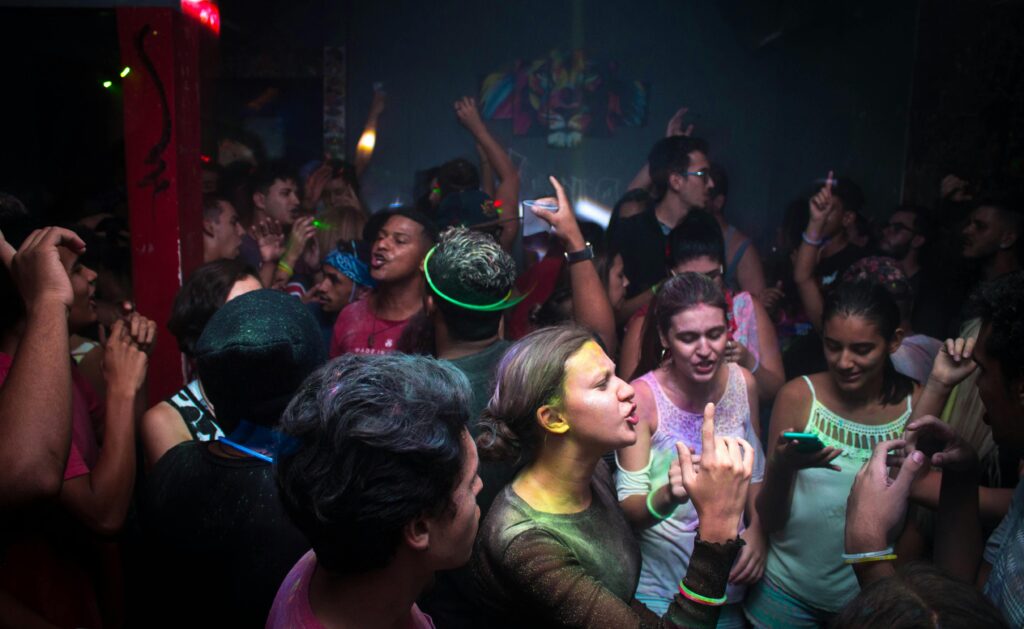There’s a critical issue facing the education sector: the need to improve responses to sexual harassment and sexual assault. This is not a new problem. It’s not a problem that has been completely ignored. Many schools and higher education providers take it seriously. But it is still a problem that demands our immediate and sustained attention.
In this article we’re going to consider:
- the current landscape
- barriers to reporting
- some considerations for response
The current landscape of sexual harassment and assault in education
In 2017 the Australian Human Rights Commission released its Change the Course report. In a survey of 30,000 students across 39 Australian universities, 21% report being sexually harassed in a university setting in 2016. That’s one in five students.
Sexual harassment and assault in higher education
Otago University conducted its own research in 2020. In a far smaller sample, they found that 28% of students report being sexually assaulted during their time as a student. 15% say they have been raped.
In 2021 Australia’s National Student Safety Survey released the findings from its extensive research project. This report finds that 16.1% of students have experienced sexual harassment since starting university.

Sexual harassment and assault in schools
A 2022 survey in my home town of Christchurch uncovered more than 3,000 instances of sexual harassment across two high schools in just two terms.
A report released earlier this year found that one in 10 Australians reported experiencing sexual harassment from their peers during childhood.
These numbers are not just statistics. They represent real people.
What’s even more concerning than these numbers is the fact that many of these incidents go unreported. For various reasons, many survivors choose not to report their experiences, meaning the true scale of the problem is likely much larger than what we realise.
Barriers to reporting sexual harassment and assault
One of the most significant challenges in addressing sexual harassment and sexual assault in educational institutions is the low rate of reporting. Many incidents go unreported, which not only leaves survivors without support but also allows perpetrators to escape accountability and potentially harm others. Understanding these barriers is crucial for developing effective strategies to encourage reporting and improve our response.
Let’s examine the main barriers that prevent victims from coming forward:
Fear of Not Being Believed
Many survivors fear that if they report an incident, they won’t be believed. This fear is often rooted in societal myths and misconceptions about sexual assault, such as the idea that victims somehow provoke attacks or that false accusations are common. In reality, false reports are rare. However, the perception that they are common can make survivors hesitant to come forward.
Shame and Self-Blame
Survivors often experience intense feelings of shame and may blame themselves for the behaviour, harassment or assault. They may question their own actions:
“Did I drink too much?”
“Should I have gone to that party?”
This self-blame is often reinforced by societal attitudes that focus on the victim’s behavior rather than the perpetrator’s actions. You know how it goes:
“Perhaps if she wasn’t so drunk this would never have happened.”
“If she dressed a little more modestly, guys wouldn’t behave like that towards her.”
These comments completely ignore the predatory actions of the perpetrator. These feelings of shame can be so overwhelming that survivors prefer to keep the incident private rather than face scrutiny.
These feelings are intensified when institutions convey a message that the onus is on the victim to prove the case. Consider this perspective.
“I never reported my experiences as I didn’t feel like there would be enough evidence for it and I didn’t want the shame and stigma associated.”
– 2021 NSSS National Report
Fear of Retaliation
In many cases, especially where the perpetrator is known to the victim, there’s a fear of retaliation.
This could involve social ostracisation, especially if the perpetrator is part of the same social circle.
In cases where the perpetrator is in a position of power – a lecturer or teacher – victims may fear academic or professional consequences. Consent: A Memoir of Unwanted Attention is a chilling psychological account of exactly this dynamic. If you work for a higher education provider, you need to read it.
There may also be fears of physical retaliation or escalation of abuse. Often the lines are blurred between what happens outside of the institution and what happens on campus.
“While at university I was in a violent relationship, which included sexual abuse. My former partner…forced me to change my degree and move universities so that I could be at the same university as him (presumably so he would have even more control over me).…Once I did finally leave the relationship, my former partner stalked me and harassed me at university on campus. He sporadically showed up at my lectures and tutorials or would find me in the library. He made my university experience hell.
2021 NSSS National Report
Lack of Confidence in the System
Many students lack confidence in their institution’s ability or willingness to handle reports appropriately.
They may have heard stories of other cases being mishandled or dismissed. This is a major issue. Failing to complete basic enquiries, such as securing CCTV footage, does irreparable damage to any trust and confidence in the system. Students experience breaches of trust when private and confidential information is inadvertently disclosed. Many institutions fail to take a trauma-informed approach, making the prospect of reporting extremely frightening.
There might be a perception that the institution cares more about its reputation than supporting victims.
Students may not be aware of the reporting processes or may find them intimidating and complex.
Desire to Avoid Reliving the Trauma
Reporting an incident often requires the survivor to recount their experience multiple times. This is often the case when the triage process is disjointed or inefficient. Or when the survivor is interviewed by an untrained interviewer who doesn’t get it right the first time around. This can be emotionally exhausting and can retraumatise the survivor.
The prospect of potentially having to face the perpetrator during an investigation or hearing can be terrifying. This shouldn’t be part of the investigation process, but there are schools and higher education providers forcing victims to face their perpetrator during the investigation in the name of upholding natural justice principles.
Cultural and Social Barriers
For some students, cultural or social factors can make reporting especially challenging.
In some cultures, there’s a strong stigma attached to sexual assault, and victims may fear bringing shame to their families.
LGBTQ+ students may fear being outed if they report an assault by someone of the same gender.
International students may face language barriers or may not be familiar with local laws and support systems.
Minimisation of the Incident
Sometimes, survivors may downplay the seriousness of what happened to them.
There may be confusion about what constitutes sexual harassment or assault, especially in cases that don’t involve physical violence. They simply might not understand. Take the concept of ‘consent’ as an example. Here’s how it’s explained in New Zealand’s Crimes Act 1961. How many students understand the following:
- A person does not consent to sexual activity just because he or she does not protest or offer physical resistance to the activity.
- A person does not consent to sexual activity if he or she allows the activity because of a threat or fear of the application of force to another person.
- A person does not consent to sexual activity if the activity occurs while he or she is asleep or unconscious.
- A person does not consent to sexual activity if the activity occurs while he or she is so affected by alcohol or some other drug that he or she cannot consent or refuse to consent to the activity.
- One person does not consent to sexual activity with another person if he or she allows the sexual activity because he or she is mistaken about who the other person is.
- A person does not consent to an act of sexual activity if he or she allows the act because he or she is mistaken about its nature and quality.
It shouldn’t surprise us that many students simply don’t realise when they’ve been sexually harassed or assaulted.
For others, it may be a misunderstanding about what offences will actually be investigated. “It wasn’t rape, so it’s not serious enough to report.”
Alcohol and Drug Involvement
Alcohol and drugs are often a factor. And often another barrier to reporting. When alcohol or drugs are involved, victims may be less likely to report for several reasons.
They may not fully remember the details of the incident. They think that if they can’t remember it in high definition then they won’t be believed. Or investigators won’t be able to do anything.
School students fear getting in trouble for underage drinking or drug use. This is a tricky balance for schools. Schools need to communicate a zero-tolerance approach to drugs and alcohol. But students also need to understand that this should never be a barrier to reporting.
Students may feel that their impairment makes them partially responsible for what happened.

Lack of Privacy and Confidentiality Concerns
Students may worry about a lack of privacy if they report an incident.
In close-knit school communities, news can spread quickly. I grew up in a rural community and I know that any story of a sexual nature spreads like wildfire. And this was before the days of social media.
There may be concerns about information being shared with parents or appearing on academic records.
Time-consuming and Emotionally Draining Process
The reporting and investigation process can be lengthy and emotionally taxing. Students may worry about the impact on their studies and mental health. This is a well-documented consequence of investigations. They may feel they don’t have the energy to go through a potentially long and difficult process.
Response
Understanding these barriers is crucial for developing effective strategies to encourage reporting. We need to create systems and cultures that address these concerns head-on. Here are some points of action for schools and higher education providers to consider.
Criminal v civil
I believe students need more education on the difference between a criminal investigation and a civil investigation. The evidential threshold required to lay a criminal charge, let alone obtain a conviction in the criminal system is significant. In New Zealand, the recently expanded Solicitor General’s Prosecution Guidelines now state that Police must be satisfied they have sufficient evidence to prove a charge beyond reasonable doubt before even laying a charge. That’s a reference to the burden of proof required in a criminal court: ‘beyond reasonable doubt’. It’s a high threshold and the burden of proof lies with the prosecution.
Victims of sexual assault who report to Police face a battle. Police in New Zealand and across Australia do a magnificent job. But the nature of the legal system means the victims of sexual assault are somewhat disempowered. The investigation process is invasive in every way. If the matter goes to trial, it often feels like the victim is the person on trial. The evidential threshold makes it difficult to secure a conviction. Often the perpetrator is not held accountable because the prosecution is simply unable to prove the case beyond a reasonable doubt.
I suspect many victims of sexual harassment and assault wrongly believe that the process will be the same if their institution investigates. But it’s not. Administrative investigations conducted within schools and tertiary institutions are not criminal investigations. They are civil investigations. The evidential threshold is different. The investigator makes findings on the ‘balance of probabilities’. In other words, ‘is it more likely than not’ that this occurred?
The process is far less traumatic. Many complaints that fail to be proven in a criminal court may well be substantiated in a civil investigation process. It gives the victim a far greater chance of having their perpetrator held to account.
If students were better educated on the difference between criminal and civil investigations, this may well remove one of the barriers to reporting.
Mythbusting
Educate our students about sexual harassment and assault. We need to dispel the ongoing myths around these concepts. Continue teaching students about consent. Ensure students understand what is sexual harassment and assault and what is not. Not because it’s going to stop a determined perpetrator, but because it will empower victims.
Reporting options
Students need multiple reporting options. They need to feel empowered. They need the option of making a formal complaint and the option of making a confidential disclosure. The different options, and the outcomes of each option, need to be clearly communicated.
Anonymous reporting lines can be confusing and problematic. Administrative investigations should align with natural justice principles. Natural justice principles make it clear the respondent has the right to know what is being alleged and by whom. Ordinarily, you cannot take disciplinary action against a perpetrator who is named in an anonymous report. Students need to understand this before they select this option.
Trauma-informed training
Ensure that all staff involved in handling reports are well-trained in trauma-informed approaches. This ensures consistency in your approach. It provides your students with reassurance.
Anti-retaliation policies
As outlined above, one of the barriers to reporting is the fear of retaliation. You need to implement strong anti-retaliation policies. They need to be clearly communicated to students and staff. Most importantly, they need to be enforced. Nothing undermines a justice system quicker than allowing an alleged perpetrator to intimidate a complainant or witnesses. This sort of behaviour needs to be dealt with swiftly and firmly.
When I was a Detective Sergeant, my team investigated a sexual assault case in which the victim was intimidated. She made a complaint against a male associate who had assaulted her. Within days she was visited by the suspect’s family members. They broke into her house, physically assaulted her and stole some of her personal items. The aim was intimidation. Thankfully, the victim reported this to us. We acted fast. We sent a message: don’t interfere with our investigation. Let us do our job.
Schools and tertiary providers need to take the same zero-tolerance approach towards anyone who attempts to retaliate against complainants.
Cultural competence
The education sector across Australia and New Zealand is becoming increasingly diverse. There are incentives at secondary and tertiary level to increasingly internationalise. The cultural diversity of our institutions is going to increase. We need to be ready. Investigators and support services need to be prepared to address the needs of diverse student populations.
By addressing these barriers, we can create an environment where survivors feel safer coming forward. In the long run, this helps us to prevent this behaviour happening in the first place. It enables us to create education spaces that are safe and secure. That is, after all, the least we can do for our students.
If you would like to improve your approach towards sexual harassment and assault, get in touch. Our services include:
- independent investigations into allegations of sexual harassment and assault
- professional development for sexual harassment and assault investigators
- consulting services to assist you in your prevention, triage and response to sexual harassment and assault.
